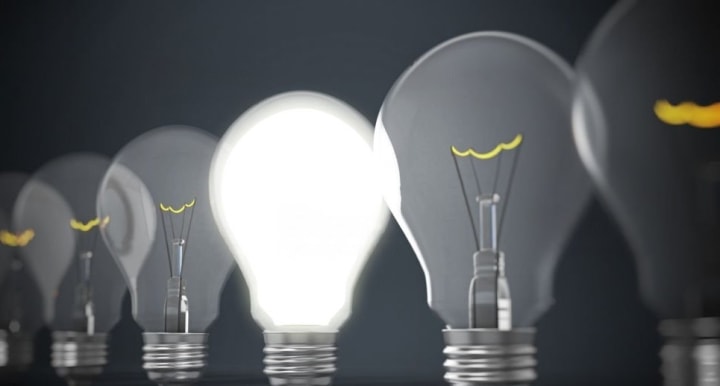LED Lighting Terms Everyone Should Know
Knowledge Tips & Tricks, Experience

Everyone should know LED lighting regulations
Since LED lighting is so ubiquitous in our daily lives, it's important to understand the jargon used by lighting professionals and enthusiasts. From color temperature to lumen output, this article covers the essential LED lighting terms everyone should know.
Table of Contents
- What is an LED lamp
- Lumens and Lux
- Color temperature
- CRI (Color Rendering Index)
- Wattage and energy efficiency
- Beam angle
- Dimming and control systems
- IP rating
- Lifetime and MTBF
- Heat dissipation
- LED chips and packages
- Drive and power supply
- Restoration and replacement
- Conclusion
What is an LED lamp
LED stands for "light-emitting diode," a semiconductor device that produces light when electricity is passed through it. Compared to traditional lighting technologies such as incandescent bulbs and fluorescent tubes, LED lights are more energy efficient, last longer and generate less heat.

Lumens and Lux
Lumens and Lux are two units used to measure the brightness of LED lights. Lumens refers to the total amount of visible light emitted by a light source, while lux measures the amount of light falling on a surface per unit area. The higher the lumen output or lux level, the brighter the LED lights.
Color temperature
Color temperature refers to the perceived color of light emitted by an LED bulb, measured in degrees Kelvin (K). A low Kelvin temperature (eg, 2700K) produces warm, yellow light, while a high Kelvin temperature (eg, 5000K) produces cool, blue light. Choosing the right color temperature for your space can affect the atmosphere and mood.
CRI (Color Rendering Index)
CRI is a measure of how well an LED light source delivers colors compared to natural daylight. It is measured on a scale of 0 to 100, with higher numbers indicating better color rendering. A CRI of 80 or higher is generally recommended for residential and commercial lighting applications.
Wattage and energy efficiency
Wattage refers to the amount of power an LED bulb uses to produce light. However, wattage alone does not determine the brightness or efficiency of an LED lamp. Energy efficiency is measured in lumens per watt (LPW), which indicates how much light output is produced per unit of power consumption. Higher LPW values indicate higher energy efficiency.

Beam angle
Beam angle refers to the spread of light emitted by an LED bulb, measured in degrees. Narrow beam angles (eg, 15 degrees) produce a focused, spotlight effect, while wider beam angles (eg, 120 degrees) provide more diffuse, general illumination. Choosing the right beam angle can affect the coverage and distribution of light.
Dimming and control systems
LED lights can be dimmed using various control systems such as wall dimmer switches, remote controls and smart home automation. However, not all LED bulbs are compatible with all types of dimmers, so it's important to check the manufacturer's specifications. Additionally, some LED bulbs may require special wiring or controllers for dimming functionality.
IP rating
The IP rating (Ingress Protection rating) measures the degree of protection provided by an LED fixture against dust and moisture ingress. It is expressed as a two-digit code, the first digit indicating dust protection and the second digit indicating moisture protection. Higher IP ratings mean greater protection, with IP65 or higher recommended for outdoor and wet area applications.
Lifetime and MTBF
LED lights have a longer lifespan than traditional lighting technologies, rated at an average of 25,000 to 50,000 hours or more. MTBF (Mean Time Between Failures) is a measure of the reliability of an LED bulb or fixture, indicating how long it is expected to operate before failing. Higher MTBF values indicate higher reliability and durability.
Heat dissipation
LED lights generate less heat than traditional lights, but they still generate some heat, which is necessary to ensure proper operation and longevity. Heat sinks and cooling fans are often used to dissipate heat from LED fixtures and bulbs.
LED chips and packages
LED chips are what make up the light in an LED bulb or Fixturere attempting to retrofit.
Conclusion
Understanding the essential LED lighting terms can help you make informed decisions when choosing LED lighting for your home or business. From lumens and lux to color temperature and CRI, each term plays a role in determining the performance, efficiency, and quality of LED lighting.
About the Creator
Professional Articles Writer
Hello Viewers!
Welcome to My Profile
Please Likes, Subscribes and Views My Articles
Thank You.






Comments
There are no comments for this story
Be the first to respond and start the conversation.